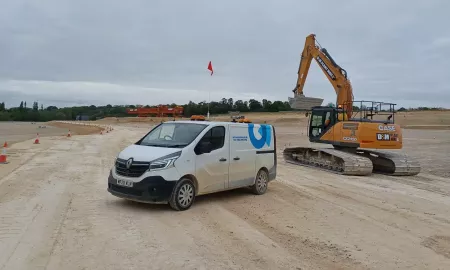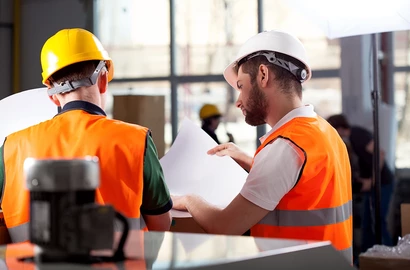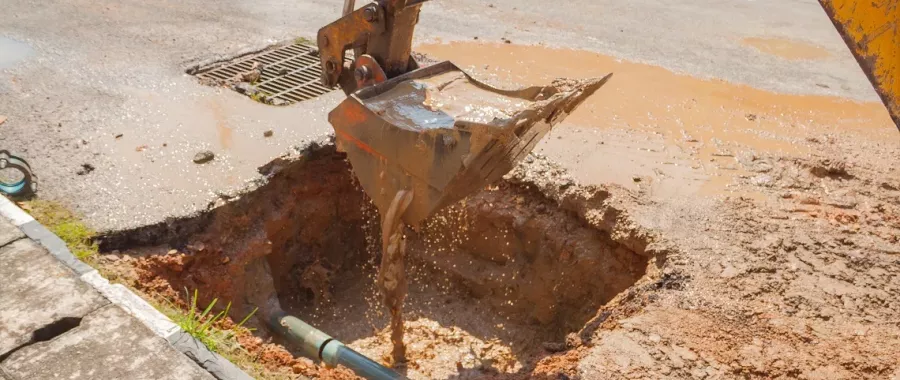Craig Sharpe, utility surveyor at SOCOTEC’s Deeside site, first joined the organisation 18 months ago, having amassed over seven years of expertise in the geotechnical sector.

In this blog, he outlines his daily responsibilities and explains how his role contributes to the division’s wider project delivery.
What does a typical day look like for a utility surveyor?
One of the major advantages of working as a utility surveyor is that no two days are ever the same. I deal with an extremely wide-ranging client base, all of whom come with their own set of requirements and a variety of site surroundings. Being responsible for the delivery and quality control of surveying work on and off site, I have to adapt to a range of different working environments on a day-to-day basis.
While no two projects are ever the same, there are certain tasks that I am legally required to carry out as part of SOCOTEC’s utility surveying service. Prior to each survey, I complete a desktop study and carry out site reconnaissance to obtain as much information as I can about the site, determining where exactly utilities are located before any surveying work takes place. This entails taking a visual account of any geotechnical or environmental hazards and surface issues while walking around the site, generally obtaining as much information as I can about the site in question. I am also required to process, interpret and present the results obtained from each utility survey using CAD, mapping out all of the located and hidden utilities in a comprehensive drawing for the client.
What equipment do you use to carry out utility surveying work?
Whether it’s a single utility or an entire site survey, I am fortunate enough to use state-of the-art underground mapping and detection technology to locate a range of buried services, including metallic, plastic, concrete and gas pipes, drainage runs, sewers and electric, communication and fibre optic cables. This includes Ground Penetrating Radar (GPR), which uses electromagnetic radiation to identify any changes in the different media under the ground; Radio Frequency Location (RFL), which is best suited to locating metallic utilities, and Stream C, which provides three-dimensional maps to automatically detect pipes, cables and drainage runs.
Do you need specific qualifications in order to become a utility surveyor?
While there aren’t a specific set of qualifications required to be a utility surveyor, there are a number of characteristics that would stand you in good stead if you were considering it as a potential career path. You need to be extremely organised, as with so many projects on the go, your workload requires effective time management. Having an analytical mind and an eye for detail is advantageous, as you are often required to respond to a range of unprecedented issues that arise on site, as well as ensuring the work you carry out is consistently accurate, high quality and legally compliant. Flexibility is also key, as you’re required to visit sites up and down the UK, often at unsociable hours and sometimes during the weekend.
What sort of projects and sites have you worked on during your time at SOCOTEC?
I have worked on a number of interesting projects across a wide range of sectors and locations while working at SOCOTEC. Some of the most high profile redevelopments that I have contributed to include a nationwide infrastructure project, a major UK airport and a London train station. I am proud to have carried out utility surveys on such a vast array of projects, as I know that the work we carry out is crucial to determining future ground investigation works on the sites, as well as helping to maximise efficiency, accuracy and cost-effectiveness for the project in its entirety.
How does your role fit in with the broader project delivery within the Ground Investigation division?
Utility surveyors are typically one of the first people to arrive on site before a shovel even hits the ground, with our work being fundamental in determining the outcome of the rest of the project. I tend to be involved in the initial stages of a project's delivery, from the moment the project is first given the go ahead to when the drawings of the data have been delivered to the client.
Once all of the required data for the utility survey has been gathered and analysed, my work is crucial to ensuring that further site investigation, borehole or trial pit drilling work can go ahead and preventing any costly and potentially dangerous conflicts, delays and disruptions to the project. As well as locating and preventing the loss of use of underground utilities on site, I am also responsible for delivering a service to the surrounding community, businesses and general public by ensuring that their utilities continue to run efficiently, further contributing to the ongoing project execution.
What do I enjoy about working at SOCOTEC?
One of the best things about working for SOCOTEC is the excellent opportunities for both professional and personal development, such as the organisation’s range of technical and management training schemes. The variety of projects and sites that I work on has provided me with a wide breadth of experience and knowledge, allowing me to go above and beyond when it comes to meeting the individual requirements of clients.
Having the opportunity to use the latest in underground mapping technology is something else I enjoy. In 2019, we invested in Stream C equipment, a real-time 3D mapping tool that ensures a 50% reduction in survey turnaround time. We remain one of the only businesses in the ground investigation sector who use this technology for surveying work, and the training we received for this technology has equipped us with a bespoke set of skills. My fellow colleagues also make my job extremely worthwhile – everyone is really helpful and willing to support you, and there is never a dull moment on or off site.
Do you have any advice for individuals who are interested in pursuing a career as a utility surveyor?
My main piece of advice for anyone considering becoming a utility surveyor is to take each day as it comes. In this role, no working day is ever the same, so you have to be willing to work hard and learn all you can from senior members of staff, who are always more than happy to share their experience and expertise with you. If you follow this advice throughout your career, you are bound to go far.
Want to find out more about SOCOTEC’s underground utility surveying services?

You might also like







Add new comment